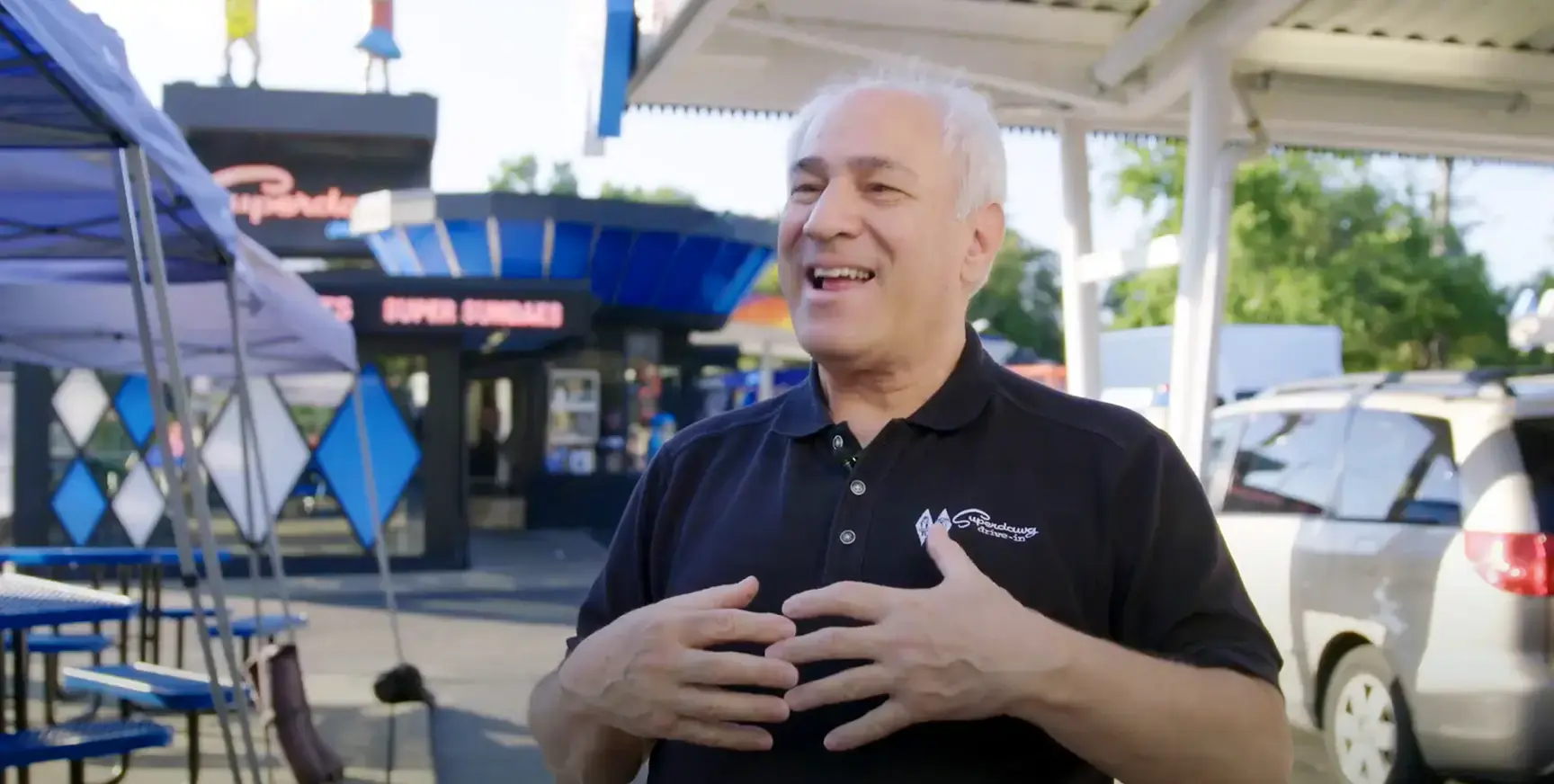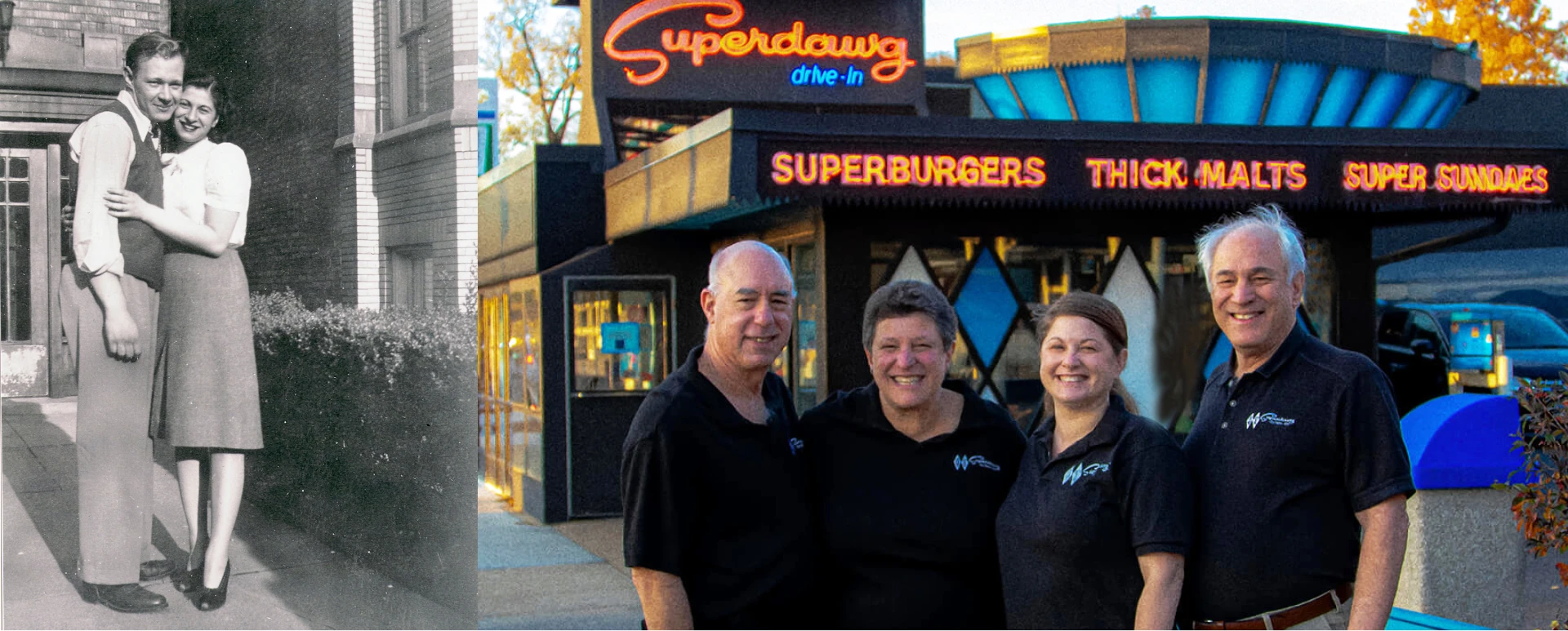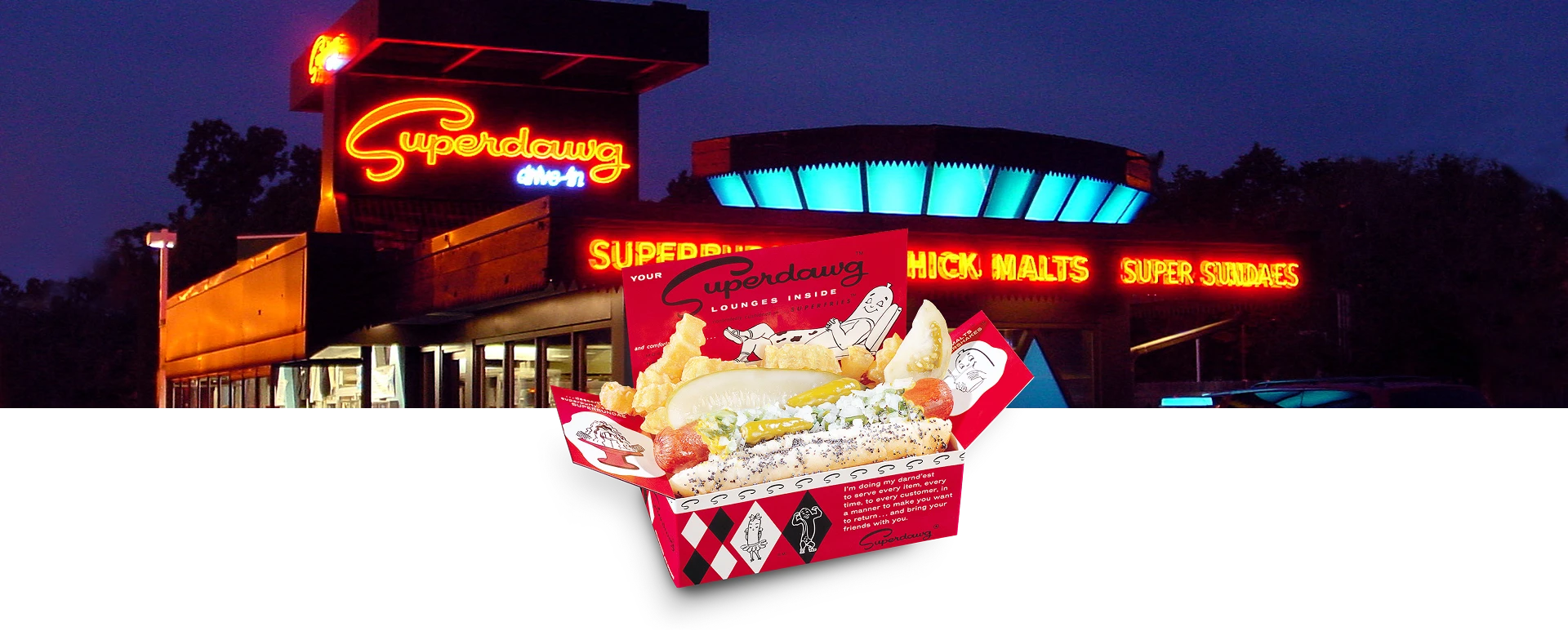
Who Did It Best? Super Scott Improves Superdawg®
The recipes remain the same. But a few smart choices are bringing new savings to an old-fashioned drive-in.
There are folks with “big personalities,” and then there’s Scott Berman. Berman’s personality is so big that he could have been 15 minutes late to tell us his story, and his personality would still be on time. In short, Scott is a passionate man. You may think that’s odd — a person who’s passionate about hot dogs. And he is.
But it goes much deeper than that.
We sat down with Berman to find out what makes him tick — and what you can learn from his experience when it comes to your passion and energy efficiency.
From the look on your face, I can see you have a story to tell.
It is a good story. My mother and father, they were from the same neighborhood in Chicago, Albany Park, and met in the local high school when they were 14 years old.
My father, Maurie Berman, and my mother, Florence Miska, dated all through high school. They went to prom together. They were sweethearts. After my father graduated high school, he went off to World War II and fought in the Battle of the Bulge. When he came back, he married my mother in 1947. They both decided to go to Northwestern University. To earn money and supplement the GI Bill, they opened Superdawg as a summer-only hot dog stand. We still call it the stand.
They graduated in 1950 and my mother became a teacher and my father became a CPA, and they looked at each other and said, “It’s more fun owning Superdawg than accounting or teaching.” So, they opened Superdawg year-round. I coincidentally was born in that same year.
So, that version of Superdawg is precisely as old as you are.
Oh yes, exactly. The building they built in 1948 is still the building that we operate out of. They placed two Superdawgs characters that they designed on the roof just a few days before we opened. And these were papier-mâché, and they still are. Twelve feet tall, he is named Maurie, my father’s name, and she is named Flaurie, which is the name my dad always called my mom.
And that is the origin of Superdawg, but it’s really the story of my mother and father. Building this business together, enjoying it all the time, never retiring, treating it as both business and hobby. My mother was honored by Northwestern Alumni Magazine about 20 years ago. When they put her on the cover, they said she was one of the early women entrepreneurs of Chicago. My mom and dad were partners in every way.
They brought romance back to hot dogs.
There you go. Absolutely true. Take a look at the photos, and you’ll see the looks on their faces — my mom and dad longingly looking at each other.

They didn’t talk about their income, or the number of locations, or the number of employees.
Right, but our staff was, and still is, the heartbeat of our business. Many are related to each other and have been with us for decades. Our mom and dad always said that a paycheck to our staff is a thank you for helping us in our endeavor.
They always thought of it that way and they always worked along with our staff.
They lived long into their 90s. My mother was answering the switchboard in her 90s and my father was there in the kitchen. We’re a family business that my mother and father were passionately involved in every day. I remember that as soon as I was able to, I wanted to work. At 8 or 9 years old, I was tall enough to reach the pop machine, so I helped put the drinks up on the counter for the customers. We continue to own Superdawg as a family business with my sister Lisa, my brother-in-law Don, and my daughter Laura.
Seems like you’ve made two things a priority: Treating your customers well and training your employees well.
100%. From the beginning, my parents said they didn’t just want to be another hot dog stand. Our Superdawgs are made with our special recipe and served with fresh-cut Superfries in special print boxes.
Our purveyors know we want a certain taste of mustard, relish, onion, pickle, sport peppers and pickled tomatoes.
I’m so glad you didn’t mention ketchup.
We know to never put ketchup on a hot dog.
All of your responses from the moment we started talking about the product focus on attention to detail, down to the box. Did that help you when you started getting into energy efficiency?
One of the things we’re famous for is the neon that my parents put on the building in 1948 and continues to this day. Also, our lit canopies surround the building and the parking lot, so there’s a lot of electricity that we use.
We want those lights to be of a certain brightness under the canopies. But it doesn’t blind you and doesn’t shine in your eyes. We are an old-fashioned drive-in. Those menu housings that people press the button and talk to us on are also illuminated beautifully. So yes, electricity not only powers the building but it powers our image.
How did the whole energy efficiency upgrade thing start?
It came from ComEd. It was a wonderful thing. So many ComEd people are customers of ours, and I think they know how brightly lit we are and how important lighting is to us.
That appeals to a business focused on those details, and you guys are a detail business, so it seemed like a really natural fit.
It was — no doubt about it. As soon as they called, there was no second thought. But we didn’t want anything to look different. And they assured us with lots of testing that each energy-efficient light would look exactly as it looked before. ComEd would change bulbs in our presence and say, “How about this one? How about that one?” so we could all get the light quality right, and we were thrilled.
We wanted it to look the same as it always had. That was very important. We wanted the neon to glow as it always had. So, the ComEd people understood all of that, and they were respectful in our relamping and energy efficiency moves throughout both our Superdawg Drive-Ins.

How did the upgrade affect your business during that time?
There was nothing ComEd did that interrupted our business. They were very sensitive to that. They said when they began, “Nothing we do will interrupt one car.” And that was absolutely true.
The investment and ROI were great, and we knew about them on day one.
Sounds like a good collaboration and painless installation. Tell us about the results.
We couldn’t be happier. Every single thing is perfect. The lighting in the kitchen is better. Everything is brighter without having changed the quality of light. The lighting in the back rooms is better. The lighting in our 15,000 square foot warehouse is better and brighter. And the menu housings are more readable. Every single thing is brighter without having changed the nature of the lighting.
You saw the difference in your warehouse. You saw the difference in your restaurants. Did you see the difference in your bill?
Yes, of course. Our ComEd bills are significantly lower. There was a significant percentage drop on day one after the conversion.
When did this investment pay for itself?
The investment and ROI were great. From day one, the amount of the investment was minimal compared to the amount of savings. And ever since then, there’s been that constant level of savings from what it had been for 70 years prior.
Learn more about facility assessments at ComEd.com/SmallBiz
And what advice would you give to a businessperson considering this?
Big thumbs up. Do it in a minute. There is no downside to this.
